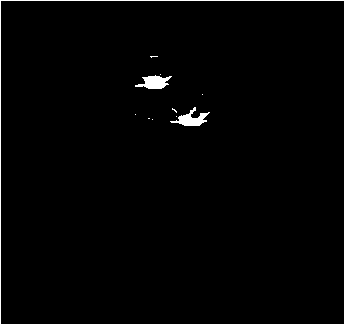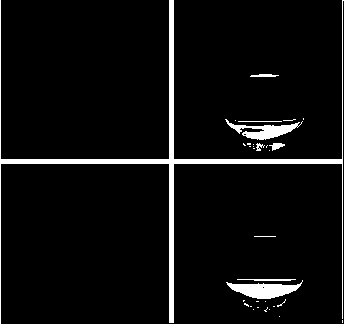Template-Free Preparation of Hierarchical Porous Polymers for Oil-Water Mixture and Emulsion Separation
A technology for the separation of oil-water mixtures and emulsions, which can be used in separation methods, liquid separation, immiscible liquid separation, etc. It can solve the problems of reduced separation efficiency and clogging, and achieves extended service life, expanded application range, and excellent superhydrophobicity. Effect
- Summary
- Abstract
- Description
- Claims
- Application Information
AI Technical Summary
Problems solved by technology
Method used
Image
Examples
Embodiment 1
[0020] Silicon dioxide 0.1 g
[0021] divinylbenzene 2.5 g
[0022] Ethyl acetate 30 mL
[0023] Azobisisobutyronitrile 0.07 g
[0024] Water heating temperature 120°C
[0025] Reaction time 18 hours
[0026] Solvent evaporation temperature 25°C
[0027] Weigh each component according to the above ratio, first disperse the nano silicon dioxide into the solvent, ultrasonic time is 10 min, then the monomer divinylbenzene, initiator azobis Isobutyronitrile was added to the above mixture and stirred for 2 h to form a prepolymer solution. Then the above pre-polymerization solution was transferred to a 100 mL polytetrafluoroethylene liner, and the temperature was raised to 120 °C at a rate of 5 °C / min for hydrothermal reaction for 18 h. After the reaction is completed, cool to room temperature and completely evaporate the solvent in an environment of 25° C. to obtain a hierarchically porous superhydrophobic polymer monolith. Its measurement of its contact angle is greater tha...
Embodiment 2
[0029] Silica 0.2 g
[0030] divinylbenzene 2.5 g
[0031] Ethyl acetate 32 mL
[0032] Azobisisobutyronitrile 0.07 g
[0033] Water heating temperature 110°C
[0034] Reaction time 20 hours
[0035] Solvent evaporation temperature 30°C
[0036] Weigh each component according to the above ratio, first disperse the nano silicon dioxide into the solvent, ultrasonic time is 20 min, and then the monomer divinylbenzene, the initiator azobis Isobutyronitrile was added to the above mixture and stirred for 3 h to form a prepolymer solution. Then the above pre-polymerization solution was transferred to a 100 mL polytetrafluoroethylene liner, and the temperature was raised to 110 °C at a rate of 5 °C / min for hydrothermal reaction for 20 h. After the reaction is completed, cool to room temperature and completely evaporate the solvent in an environment of 30° C. to obtain a hierarchically porous superhydrophobic polymer monolith. It measures that its contact angle is greater than 1...
Embodiment 3
[0038] Silica 0.4 g
[0039] Divinylbenzene 6.0 g
[0040] Ethyl acetate 80 mL
[0041] Azobisisobutyronitrile 0.15 g
[0042] Water heating temperature 110°C
[0043] Response time 24 hours
[0044] Solvent evaporation temperature 30-40°C
[0045] Weigh each component according to the above ratio, first disperse the nano silicon dioxide into the solvent, ultrasonic time is 20 min, and then the monomer divinylbenzene, the initiator azobis Isobutyronitrile was added to the above mixture and stirred for 5 h to form a prepolymer solution. Then the above pre-polymerization solution was transferred to a 200 mL polytetrafluoroethylene liner, and the temperature was raised to 110 °C at a rate of 5 °C / min for hydrothermal reaction for 24 h. After the reaction is completed, cool to room temperature and completely evaporate the solvent in an environment of 30-40° C. to obtain a hierarchically porous superhydrophobic polymer monolithic material. It is measured that its contact ang...
PUM
| Property | Measurement | Unit |
|---|---|---|
| specific surface area | aaaaa | aaaaa |
| specific surface area | aaaaa | aaaaa |
| specific surface area | aaaaa | aaaaa |
Abstract
Description
Claims
Application Information
 Login to View More
Login to View More - R&D
- Intellectual Property
- Life Sciences
- Materials
- Tech Scout
- Unparalleled Data Quality
- Higher Quality Content
- 60% Fewer Hallucinations
Browse by: Latest US Patents, China's latest patents, Technical Efficacy Thesaurus, Application Domain, Technology Topic, Popular Technical Reports.
© 2025 PatSnap. All rights reserved.Legal|Privacy policy|Modern Slavery Act Transparency Statement|Sitemap|About US| Contact US: help@patsnap.com


